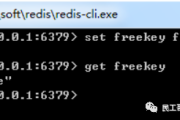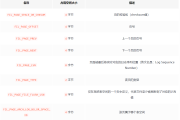Docker安装Python有两种方式
安装Python镜像
方法1.Docker pull python:3.5
在Docker Hub中搜索Python镜像:
![]()
可以通过命令查看其他Python版本排序是最新的版本python:儿童。
另外,我们还可以使用docker search python命令来查看可用的版本:
coonote@coonote:~/python$ docker search python NAME DESCRIPTION STARS OFFICIAL AUTOMATED python Python is an interpreted,... 982 [OK] kaggle/python Docker image for Python... 33 [OK] azukiapp/python Docker image to run Python ... 3 [OK] vimagick/python mini python 2 [OK] tsuru/python Image for the Python ... 2 [OK] pandada8/alpine-python An alpine based python image 1 [OK] 1science/python Python Docker images based on ... 1 [OK] lucidfrontier45/python-uwsgi Python with uWSGI 1 [OK] orbweb/python Python image 1 [OK] pathwar/python Python template for Pathwar levels 1 [OK] rounds/10m-python Python, setuptools and pip. 0 [OK] ruimashita/python ubuntu 14.04 python 0 [OK] tnanba/python Python on CentOS-7 image. 0 [OK]
这里我们拉取官方镜像,标记为3.5
coonote@coonote:~/python$ docker pull python:3.5
下载完成后,我们可以在本地镜像上查看。 list REPOSITORY 是一个标签为 3.5 的 python 镜像。
coonote@coonote:~/python$ docker images python:3.5 REPOSITORY TAG IMAGE ID CREATED SIZE python 3.5 045767ddf24a 9 days ago 684.1 MB
2。方法:通过 Dockerfile 构建
创建 Dockerfile 先创建目录 python 来存放后面相关的东西。目录 myapp 映射到 python 容器配置的应用程序目录。 进入生成的python目录,创建Dockerfile。 通过 Dockerfile 创建镜像,并替换为自己的名称: 创建完成后,我们可以在本地镜像列表中找到新创建的镜像: ~/在 python/myapp 目录中创建 helloworld.py 文件。代码如下: 命令: -v $PWD/myapp:/usr/src/myapp:我的/usr/src目录下的app挂载在myapp 容器。 -w /usr/src/myapp: 将容器目录设置为 /usr/src/myapp 作为工作目录。 python helloworld.py: 在容器上使用python命令运行工作目录中的helloworld.py。 输出:coonote@coonote:~$ mkdir -p ~/python ~/python/myapp
FROM buildpack-deps:jessie
# remove several traces of debian python
RUN apt-get purge -y python.*
# http://bugs.python.org/issue19846
# > At the moment, setting "LANG=C" on a Linux system *fundamentally breaks Python 3*, and that's not OK.
ENV LANG C.UTF-8
# gpg: key F73C700D: public key "Larry Hastings <larry@hastings.org>" imported
ENV GPG_KEY 97FC712E4C024BBEA48A61ED3A5CA953F73C700D
ENV PYTHON_VERSION 3.5.1
# if this is called "PIP_VERSION", pip explodes with "ValueError: invalid truth value ''"
ENV PYTHON_PIP_VERSION 8.1.2
RUN set -ex \
&& curl -fSL "https://www.python.org/ftp/python/${PYTHON_VERSION%%[a-z]*}/Python-$PYTHON_VERSION.tar.xz" -o python.tar.xz \
&& curl -fSL "https://www.python.org/ftp/python/${PYTHON_VERSION%%[a-z]*}/Python-$PYTHON_VERSION.tar.xz.asc" -o python.tar.xz.asc \
&& export GNUPGHOME="$(mktemp -d)" \
&& gpg --keyserver ha.pool.sks-keyservers.net --recv-keys "$GPG_KEY" \
&& gpg --batch --verify python.tar.xz.asc python.tar.xz \
&& rm -r "$GNUPGHOME" python.tar.xz.asc \
&& mkdir -p /usr/src/python \
&& tar -xJC /usr/src/python --strip-components=1 -f python.tar.xz \
&& rm python.tar.xz \
\
&& cd /usr/src/python \
&& ./configure --enable-shared --enable-unicode=ucs4 \
&& make -j$(nproc) \
&& make install \
&& ldconfig \
&& pip3 install --no-cache-dir --upgrade --ignore-installed pip==$PYTHON_PIP_VERSION \
&& find /usr/local -depth \
\( \
\( -type d -a -name test -o -name tests \) \
-o \
\( -type f -a -name '*.pyc' -o -name '*.pyo' \) \
\) -exec rm -rf '{}' + \
&& rm -rf /usr/src/python ~/.cache
# make some useful symlinks that are expected to exist
RUN cd /usr/local/bin \
&& ln -s easy_install-3.5 easy_install \
&& ln -s idle3 idle \
&& ln -s pydoc3 pydoc \
&& ln -s python3 python \
&& ln -s python3-config python-config
CMD ["python3"]</larry@hastings.org>coonote@coonote:~/python$ docker build -t python:3.5 .
coonote@coonote:~/python$ docker images python:3.5
REPOSITORY TAG IMAGE ID CREATED SIZE
python 3.5 045767ddf24a 9 days ago 684.1 MB
使用 python 镜像
#!/usr/bin/python
print("Hello, World!");启动容器
coonote@coonote:~/python$ docker run -v $PWD/myapp:/usr/src/myapp -w /usr/src/myapp python:3.5 python helloworld.py
Hello, World!
版权声明
本文仅代表作者观点,不代表Code前端网立场。
本文系作者Code前端网发表,如需转载,请注明页面地址。
 code前端网
code前端网



